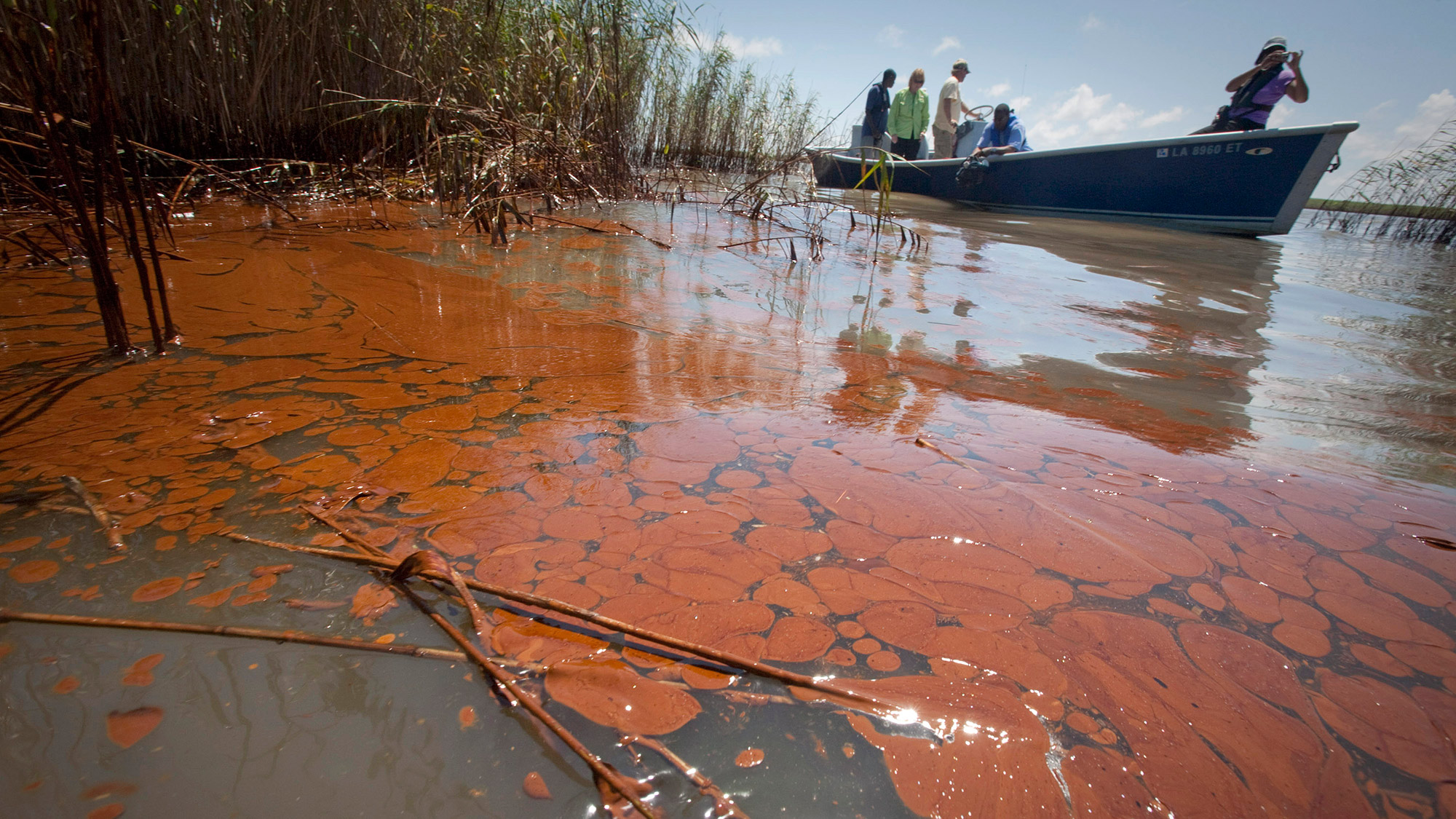How could you relate when you ain’t never been great?
And rely on oil money to keep food up on your plates?
I might sell a rig on my birthday
36 years of doing dirt like it’s Earth Day.
You might recognize those lyrics from the song “Numbers on the Board” from the artist Pusha T., though slightly modified. Those bars are how I imagine someone like BP CEO Robert Dudley might spit them, as he eagerly declares that the Gulf Coast is clear four years after his company’s Deepwater Horizon offshore oil rig exploded.
The date of that disaster happens to coincide with Earth Week, which means millions of faithful environmentalists are at attention — and they want a full accounting of just how clear the coast actually is. Given that most of the nation benefits from the spoils provided by the Gulf — its seafood, storm protection, beaches, vacation resorts, and fuels — that accounting is expected from Americans in general. And what would your favorite shows like “True Blood” and “True Detective” be without the Gulf’s glorious backdrops?
Last week, I wrote about three victories that have emerged since the BP disaster, but the flip side of that is a host of problems that continue to plague the Gulf, which has suffered a whole string of insults, from Hurricane Katrina to ongoing erosion of its coastlines due to to erosion and fossil fuel extraction. Below is an index of statistics on the Gulf’s health, cobbled together from recent news articles, reports, and datasets documenting damage done to the coast:
- 30 percent: Portion of the nation’s shrimp supply that comes from the Mississippi River Delta area
- 900: Bottlenose dolphins found dead or stranded in the oil spill area since the Deepwater Horizon rig exploded
- 500: Sea Turtles found dead or stranded near the oil spill area between 2011 and 2013
- 20 percent: Portion of the Gulf’s bluefin tuna exposed to oil while in their larval stage
- 82 percent: Population decline in bluefin tuna since the 1970s due to overfishing
- 778 miles: Amount of coastline BP says it cleaned before ending “active cleanup”
- $14 billion: Amount BP says it spent on spill response and cleanup activities
- $12.9 billion: Amount BP says it paid in claims, advances, civil settlements, and payments for tourism promotion, seafood testing, marketing, and health services
- $23 billion: BP’s profits in 2013
- 70 million: Number of personnel hours BP says it used in the cleanup effort
- 33,000: Number of cleanup workers and coastal residents exposed to BP oil or dispersant who are being tracked in a National Institute for Health study
- 20 percent: Portion who were out of work when initially contacted for the survey
- $105 million: Amount BP paid under a partial settlement for the oil spill to fund new healthcare centers and services for the Gulf
- 17 months: Time period BP was banned from all federal contracts
- Two weeks: Length of time after that suspension was lifted before BP had another oil spill
- Five: Number of rigs BP had in the Gulf of Mexico before the spill
- 10: Number of oil rigs BP currently has in the Gulf
- 1.3 million: Barrels of oil produced daily in the U.S. Gulf in 2011
- 2 million: Barrels of oil expected to come from the U.S. Gulf daily by 2020
Sources:
“The Coastal Index: The Problem and Possibility of Our Coast,” The Data Center
“Fourth Quarter and Full Year 2013 Results (Stock Exchange Announcement),” BP
“Four Years into the Gulf Oil Disaster: Still Waiting for Restoration,” National Wildlife Federation
“Active Shoreline Cleanup Operations from Deepwater Horizon Accident End,” BP
“Four Years Later, a Sharp Divide on Gulf Oil Spill,” National Journal
“The return of deepwater drilling: By the numbers (2012),” The Week
“On 4th anniversary of BP oil spill, questions linger about health impact,” WWLTV



